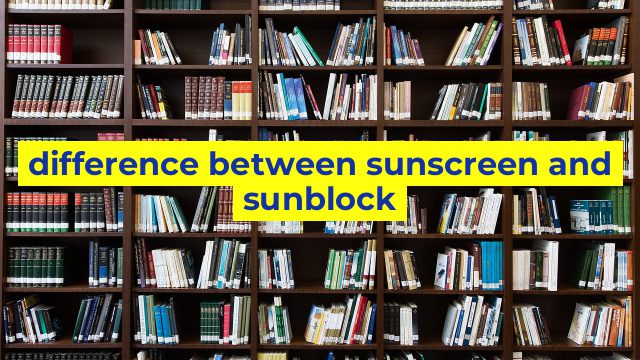Understanding the Critical Difference between Sunscreen and Sunblock
Introduction
Protecting your skin from the harmful effects of the sun is a critical health need, especially for people who spend a considerable amount of time outdoors. However, there is often confusion between sunscreen and sunblock and which one to use. While both offer protection against UV rays, there are significant differences between the two.
Sunscreen and Sunblock: The Differences
Firstly, sunblock forms a thick physical barrier over the skin to keep the UV rays out. It consists of ingredients such as titanium dioxide and zinc oxide, which sit on the skin’s surface and prevent the sun’s rays from penetrating the skin. On the other hand, sunscreen provides chemical protection from the sun’s rays by absorbing or reflecting UV radiations. It diffuses the rays so that they do not penetrate the skin.
Sunblock is typically a thick cream that is opaque, making it noticeable on the skin. It is often recommended for highly sensitive skins or people who work in the sun for extended periods. Sunscreens typically come in different forms, such as lotions, sprays or gels, and they disappear into the skin after being applied.
Another significant difference between the two is the way they work. Sunblock offers complete protection against both UVA and UVB rays, while sunscreens can be either UVA or UVB oriented. UVA rays penetrate the skin deeper than UVB rays, which cause skin burns. In addition, sunscreens break down over time, so re-application is necessary to maintain full protection.
Which One Should You Choose?
The choice between sunscreen and sunblock depends on several factors, including skin type, personal preference, and the duration of exposure to the sun. Sunscreen is an excellent choice for people who play sports or work outdoors, as it is easy to apply and reapply. People with sensitive skin or prolonged sun exposure should consider using sunblock for complete protection.
It is important to take note that both sunscreen and sunblock are needed to avoid skin damage from the sun’s rays. While they work differently, the ultimate goal is to prevent exposure to harmful rays that can lead to skin cancer, pigmentation, premature aging, and other skin issues.
Conclusion
In summary, the difference between sunscreen and sunblock is mainly evident in their composition, mode of protection, and active ingredients. Sunblock creates a physical barrier on the skin to prevent sunburn, while sunscreen offers chemical protection against the sun’s rays. The choice between the two should be based on individual preference, skin type, duration of sun exposure, and other factors. Ensuring proper protection from the sun is critical in preventing skin-related health issues.
Table difference between sunscreen and sunblock
| Comparison | Sunscreen | Sunblock |
|---|---|---|
| Definition | A lotion, cream, or spray that absorbs or reflects UV radiation to protect the skin from Sunburn and other damage. | A physical barrier that sits on the skin and blocks both UVA and UVB rays from penetrating the skin. |
| Main ingredients | Chemical filters | Mineral filters |
| How it works | Chemical filters absorb the UV radiation, convert it into heat, and then release it from the skin. | Mineral filters reflect and scatter the UV radiation, creating a physical barrier between the skin and sun. |
| Effectiveness | Effective in preventing sunburn and reducing the risk of skin cancer. | Generally more effective than sunscreen because of the physical barrier it creates. However, it may leave a white cast on the skin if not applied correctly. |
| Application | Should be applied 15-30 minutes before sun exposure and reapplied every 2 hours or after swimming or excessive sweating. | Can be applied directly to the skin, but it may require more effort to apply evenly. |
| Consistency | Thinner and easier to apply than sunblock. | Thicker and may leave a white cast on the skin if not applied correctly. |
